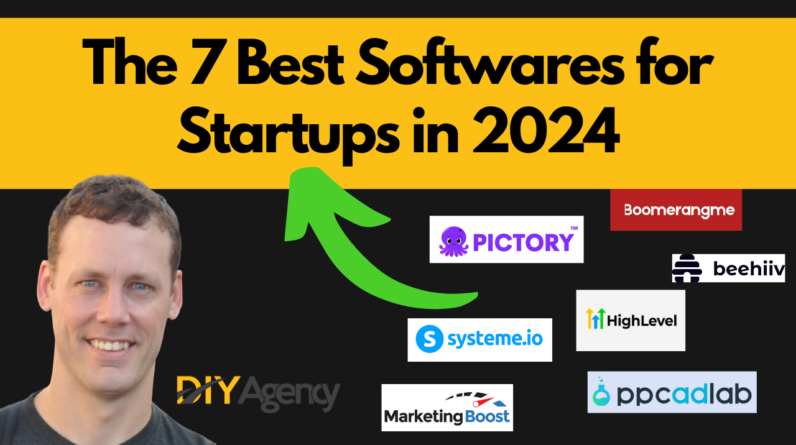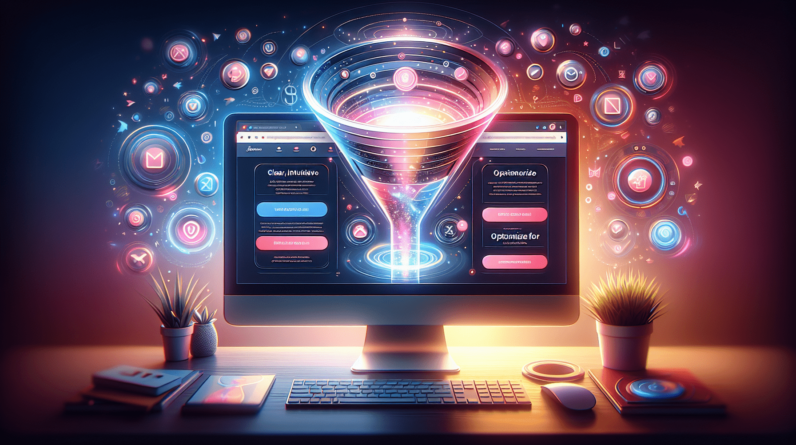
In this article, you will discover the essential steps to create a thriving marketing funnel using GoHighLevel. Whether you’re a seasoned marketer or just starting out, this comprehensive guide will equip you with the knowledge and tools necessary to build a successful marketing funnel. From crafting compelling landing pages to nurturing leads and converting them into loyal customers, you’ll learn how to leverage GoHighLevel’s powerful features to optimize your marketing strategy and drive tangible results. Get ready to take your marketing efforts to new heights with GoHighLevel!
What is GoHighLevel?
Overview of GoHighLevel
GoHighLevel is an all-in-one marketing automation and CRM platform designed to help businesses streamline their marketing and sales processes. With its comprehensive set of tools and features, GoHighLevel empowers businesses to create and manage effective marketing funnels, automate email sequences, design attractive landing pages, and more. It aims to simplify the complex task of marketing and sales automation, allowing businesses to focus on other important aspects of their operations.
Key features of GoHighLevel
GoHighLevel offers a wide range of key features that make it a powerful platform for building successful marketing funnels. These include:
-
Marketing Automation: GoHighLevel allows you to automate your marketing tasks, such as sending emails, following up with leads, and managing customer interactions. This frees up valuable time and resources, enabling you to focus on other aspects of your business.
-
CRM Integration: With its built-in CRM capabilities, GoHighLevel provides a centralized database for managing customer relationships. It allows you to track customer interactions, manage leads and contacts, and monitor the progress of your marketing campaigns.
-
Landing Page Builder: GoHighLevel provides a user-friendly drag-and-drop landing page builder, making it easy to create visually appealing and high-converting landing pages. You can customize your landing pages with images, videos, forms, and other elements to capture leads and drive conversions.
-
Email Marketing: GoHighLevel offers robust email marketing features, including the ability to create and send personalized email sequences. You can segment your email list, schedule automated email sequences, and track the performance of your email campaigns.
-
Analytics and Reporting: GoHighLevel provides detailed analytics and reporting tools to help you track the performance of your marketing funnels. You can analyze key metrics, such as conversion rates, open rates, and click-through rates, to identify areas for improvement and optimize your marketing strategies.
Understanding Marketing Funnels
Definition of a marketing funnel
A marketing funnel is a visualization of the customer journey from awareness to conversion. It is a step-by-step process that guides potential customers through various stages, starting from the initial awareness of your brand or product, through consideration and evaluation, to the final decision to purchase. The funnel concept represents the gradual narrowing down of potential customers as they progress through each stage, with the ultimate goal of converting them into paying customers.
Why marketing funnels are important
Marketing funnels are important because they provide a structured framework for businesses to attract, engage, and convert leads into customers. By understanding the different stages of the funnel, businesses can create targeted marketing strategies that address the specific needs and interests of their audience at each stage. This helps to optimize marketing efforts, increase conversions, and maximize the return on investment (ROI) of marketing campaigns.
Components of a marketing funnel
A typical marketing funnel consists of several key components:
-
Awareness Stage: In this stage, potential customers become aware of your brand or product through various marketing channels, such as social media, advertising, or content marketing.
-
Interest Stage: Once potential customers are aware of your brand, they may show interest by visiting your website, engaging with your content, or subscribing to your email list.
-
Consideration Stage: At this stage, potential customers are evaluating your brand or product and comparing it to other options. They may be seeking more information, reading reviews, or comparing prices.
-
Decision Stage: In the decision stage, potential customers are ready to make a purchase. They have evaluated their options and are deciding whether or not to buy from you.
-
Action Stage: This is the final stage of the funnel where potential customers take action and make a purchase. It may involve completing a transaction, signing up for a service, or subscribing to a membership.
By understanding these components and the customer journey, businesses can create targeted marketing strategies to guide potential customers through each stage of the funnel and increase the chances of conversion.
Choosing the Right Funnel Strategy
Identifying your target audience
Before choosing the right funnel strategy, it is crucial to identify your target audience. You need to understand who your ideal customers are, what their needs and pain points are, and how your product or service can solve their problems. By having a clear understanding of your target audience, you can tailor your marketing messages and funnel strategy to effectively reach and engage with them.
Setting clear marketing goals
Setting clear marketing goals is essential in choosing the right funnel strategy for your business. What do you want to achieve with your marketing funnel? Are you looking to generate leads, increase conversions, or drive sales? By defining your goals, you can align your funnel strategy with your objectives and create a roadmap for success.
Determining the best funnel strategy for your business
Once you have identified your target audience and set clear marketing goals, you can determine the best funnel strategy for your business. There are several types of funnel strategies to consider, including:
-
Lead Generation Funnel: This type of funnel focuses on capturing leads and building an email list. It typically includes a lead magnet, such as a free ebook or webinar, to incentivize potential customers to provide their contact information.
-
Sales Funnel: A sales funnel is designed to drive conversions and sales. It typically includes a series of steps, such as a landing page, sales page, and checkout process, to guide potential customers towards making a purchase.
-
Onboarding Funnel: An onboarding funnel is used to nurture and educate new customers, ensuring a smooth transition from the point of purchase to becoming a loyal customer. It may include welcome emails, tutorials, and customer support resources.
-
Upsell and Cross-sell Funnel: This type of funnel is designed to increase the value of each customer by offering additional products or services. It typically involves strategically presenting relevant upsells or cross-sells after the initial purchase.
Choosing the right funnel strategy depends on your industry, target audience, and marketing goals. It may require experimentation and testing to determine which strategy works best for your business.
Setting Up Your GoHighLevel Account
Signing up for GoHighLevel
To set up your GoHighLevel account, you can visit the official website and sign up for a free trial or a paid subscription. Simply fill out the necessary information, such as your name, email, and password, and follow the registration process.
Navigating the dashboard
Once you have signed up and logged into your GoHighLevel account, you will be greeted with a user-friendly dashboard. The dashboard provides an overview of your account activities and allows you to access various features and tools. You can navigate through the different sections, such as contacts, campaigns, funnels, and settings, to manage your marketing and sales processes effectively.
Customizing your account settings
It is important to customize your account settings to align with your branding and business requirements. In the settings section, you can customize your business name, logo, colors, and domain settings. Additionally, you can configure other settings, such as email integration, CRM settings, and analytics tracking, to ensure that your GoHighLevel account is tailored to your specific needs.
Building an Effective Lead Magnet
Understanding lead magnets
A lead magnet is a valuable and relevant piece of content or offer that is provided to potential customers in exchange for their contact information. It is designed to attract and capture leads, allowing businesses to build an email list and nurture relationships with potential customers. Lead magnets can take various forms, such as ebooks, whitepapers, templates, webinars, or free trials.
Creating a compelling offer
To create an effective lead magnet, it is important to offer something of value that resonates with your target audience. The offer should address a specific problem or pain point that your potential customers are facing, and provide them with a solution or valuable information. By creating a compelling offer, you can increase the likelihood of potential customers engaging with your lead magnet and providing their contact information.
Designing an attractive landing page
A well-designed landing page is crucial for capturing leads and driving conversions. When designing your landing page, make sure to keep it simple, visually appealing, and focused on the offer. Use clear and compelling headlines, bullet points, and visuals to convey the benefits of your lead magnet. Include an opt-in form where potential customers can provide their contact information, and ensure that the form is easy to fill out and submit.
Creating High-Converting Opt-In Forms
Placement and design of opt-in forms
The placement and design of your opt-in forms play a significant role in capturing leads and driving conversions. Consider placing opt-in forms strategically on your website, blog posts, landing pages, and other relevant areas where potential customers are most likely to engage. Use eye-catching designs, colors, and fonts that align with your branding and make your opt-in forms stand out. Additionally, keep the form fields to a minimum to reduce friction and make it easier for potential customers to subscribe.
Using enticing copy and visuals
The copy and visuals used in your opt-in forms should be enticing and persuasive. Clearly communicate the value proposition and benefits of subscribing to your email list or receiving the lead magnet. Use compelling headlines, persuasive copy, and high-quality visuals to captivate potential customers and encourage them to take action. It is also beneficial to include social proof, such as testimonials or statistics, to enhance the credibility and trustworthiness of your offer.
Implementing A/B testing for optimization
A/B testing is a valuable technique for optimizing the performance of your opt-in forms. By creating multiple variations of your opt-in forms and testing them against each other, you can identify which design, copy, or placement performs best in terms of capturing leads and driving conversions. Monitor key metrics, such as conversion rates and click-through rates, to determine the most effective version of your opt-in forms and continuously improve their performance.
Crafting Engaging Email Sequences
Segmenting your email list
Segmenting your email list is essential for crafting engaging and personalized email sequences. By dividing your email subscribers into different segments based on demographics, preferences, or behavior, you can tailor your email content to match their specific needs and interests. This helps to increase the relevance and effectiveness of your email sequences, leading to higher open rates, click-through rates, and conversions.
Writing attention-grabbing subject lines
The subject line is the first thing your email subscribers see in their inbox, and it plays a crucial role in determining whether or not they will open your email. To grab their attention, make sure to write compelling subject lines that create curiosity, offer a benefit, or evoke an emotional response. Keep your subject lines concise, clear, and personalized to increase the chances of your emails being opened and read.
Providing valuable content in each email
Every email in your sequence should provide valuable and relevant content to your subscribers. It is important to deliver on the promises made in the subject line and continue to engage and educate your subscribers. Whether it’s sharing industry insights, offering tips and tricks, or providing exclusive discounts, make sure that each email adds value and encourages your subscribers to take the desired action.
Designing a Smooth Sales Page
Structuring your sales page
When designing your sales page, it is important to have a clear and logical structure that guides potential customers through the buying process. Start with a compelling headline and subheadings that capture attention and communicate the main benefits of your product or service. Provide detailed information about your offering, including features, pricing, and any special offers. Finally, include a clear call-to-action (CTA) that directs potential customers to take the desired action, such as making a purchase or scheduling a consultation.
Highlighting key benefits and features
To persuade potential customers to make a purchase, it is crucial to highlight the key benefits and features of your product or service. Clearly communicate how your offering solves their problems or fulfills their needs and why it is better than other alternatives. Use persuasive copy, visuals, and testimonials to showcase the unique selling points and demonstrate the value of your offering.
Including social proof and testimonials
Social proof plays a significant role in building trust and credibility with potential customers. Include testimonials, reviews, case studies, or logos of well-known clients to demonstrate that your product or service has been successfully used and appreciated by others. Additionally, consider including trust badges, security seals, or customer ratings to further enhance the trustworthiness of your sales page and alleviate any concerns potential customers may have.
Integrating Payment Gateways
Choosing the right payment gateway
Choosing the right payment gateway is crucial for a smooth and secure checkout process. Consider factors such as transaction fees, supported payment methods, security features, and integration capabilities when selecting a payment gateway. Popular payment gateways often used with GoHighLevel include Stripe, PayPal, and Braintree. It is important to choose a payment gateway that aligns with your business requirements and provides a seamless and reliable payment experience for your customers.
Adding payment options to your sales page
Once you have chosen a payment gateway, you can easily integrate it with your GoHighLevel account and add payment options to your sales page. Provide clear and prominent buttons or links that enable potential customers to select their preferred payment method and proceed with the checkout process. It is important to offer multiple payment options, such as credit cards, PayPal, or Apple Pay, to accommodate the preferences of different customers and minimize friction during the purchasing process.
Ensuring a seamless checkout process
A seamless checkout process is crucial for minimizing cart abandonment and increasing conversions. Make sure that your checkout page is user-friendly, visually appealing, and optimized for mobile devices. Streamline the checkout process by requesting only essential information, such as shipping address and payment details, and offering guest checkout options. Provide real-time order summaries, clear shipping options, and secure payment processing to instill trust and confidence in potential customers.
Optimizing and Analyzing Your Funnel
Tracking and measuring key metrics
Tracking and measuring key metrics is essential for optimizing the performance of your marketing funnel. Utilize the built-in analytics and reporting tools provided by GoHighLevel to monitor important metrics, such as conversion rates, click-through rates, bounce rates, and revenue generated. By understanding how your funnel is performing at each stage, you can identify areas for improvement and make data-driven decisions to optimize your marketing strategies.
Identifying areas for improvement
Analyzing the performance of your funnel can help you identify areas for improvement. Look for bottlenecks or drop-off points in your funnel where potential customers are not progressing or converting as desired. Evaluate the effectiveness of your lead magnets, opt-in forms, email sequences, sales pages, and checkout process. By identifying areas for improvement, you can make adjustments, experiment with different approaches, and optimize your funnel for increased conversions and revenue.
Implementing split testing for optimization
Split testing, also known as A/B testing, is a powerful technique for optimizing your marketing funnel. By creating multiple variations of your funnel steps and testing them against each other, you can determine which design, copy, or layout performs better in terms of driving conversions. Test different elements, such as headlines, call-to-action buttons, colors, or form fields, and monitor the results to make data-driven decisions and continuously improve the performance of your marketing funnel.
In conclusion, GoHighLevel is a comprehensive marketing automation and CRM platform that empowers businesses to build successful marketing funnels. By understanding the components of a marketing funnel and choosing the right funnel strategy, businesses can leverage GoHighLevel’s features to create effective lead magnets, high-converting opt-in forms, engaging email sequences, smooth sales pages, and seamless checkout processes. By optimizing and analyzing the performance of their funnels, businesses can drive more conversions, increase revenue, and achieve their marketing goals with GoHighLevel.









